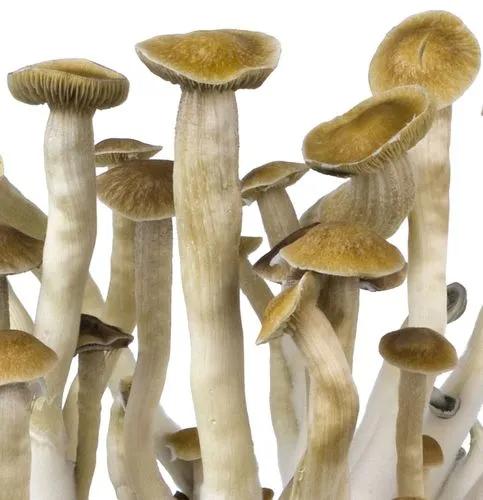The pileus or cap of the original wild species is a pale grey-brown in color, with broad, flat scales on a paler background and fading toward the margins. It is first hemispherical in shape before flattening out with maturity, and 5–10 centimetres (2–4 inches) in diameter. The narrow, crowded gills are free and initially, pink, then red-brown and finally a dark brown with a whitish edge from the cheilocystidia. The cylindrical stipe is up to 6 cm (2+1⁄2 in) tall by 1–2 cm (1⁄2–3⁄4 in) wide and bears a thick and narrow ring, which may be streaked on the upper side. The firm flesh is white, although stains a pale pinkish-red on bruising. The spore print is dark brown. The spores are oval to round and measure approximately 4.5–5.5 μm × 5–7.5 μm, and the basidia usually two-spored, although two-tetrasporic varieties have been described from the Mojave Desert and the Mediterranean, with predominantly heterothallic and homothallic lifestyles, respectively. This mushroom is commonly found worldwide in fields and grassy areas following rain, from late spring through to autumn, especially in association with manure. In many parts of the world it is widely collected and eaten; however, resemblance to deadly or poisonous lookalikes (see below) should be noted.
White Button Mushroom Care
Agaricus Bisporus



How to Care for the Plant

Fertilizer

You need to use spawns, not seeds, to grow mushrooms. You can purchase ready-made spores online or at a nursery. Some spores have already been inoculated or mixed in with a substrate, such as dirt, hay, or sawdust.

Sunlight

They don’t need sunlight, and you can buy affordable, simple kits to help you grow them

Soil

Mushroom spores don’t contain chlorophyll like plants do to start germinating, so they need substances like wood chips or liquid for nourishment to get started.

Temperature

Mushrooms enjoy growing in areas that are cool and dark, so you want to pick somewhere to grow them that is between 65-75℉. It also needs to be shielded from light and any disturbances.

Popularity

104 people already have this plant 35 people have added this plant to their wishlists
Discover more plants with the list below
Related articles




